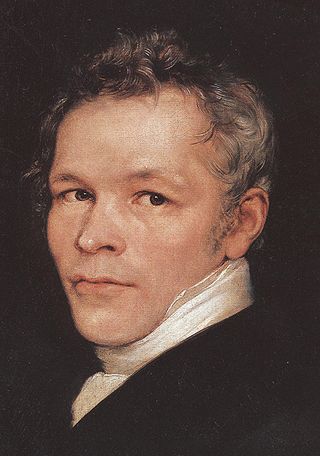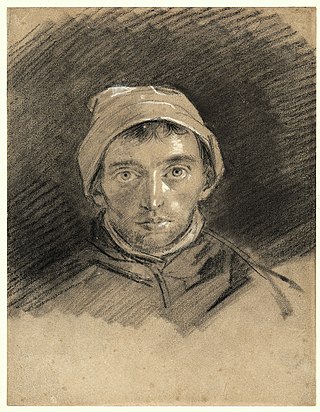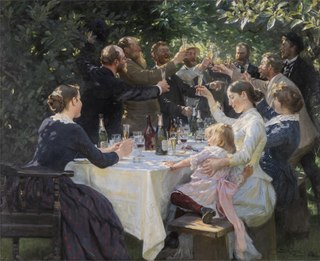Biography
He came from a family of artists. His father was the sculptor, Emanuel Bardou, and his uncle was the portrait painter, Paul Joseph Bardou, with whom he studied.
From 1804 to 1827, he was a portrait painter in Russia, mostly in St. Petersburg, Moscow and Kazan. He eventually took Russian citizenship. Approximately 160 of his works have been identified by employees of the Museum of Moscow, held in various museums and private collections. He is often confused with another portrait painter, Johann P. Bardou [ pl ], who also worked in Russia at a slightly earlier period.
He married a Russian, Anna Iwanowna (1786–1840), who died in Darmstadt following a long illness. They had two sons and a daughter.
By 1831, he had returned to Berlin and exhibited his works there, throughout the mid-1830s and early 1840s. Nothing is known of his life after a showing there in 1842. The first full exhibition of his works was held in 1999 at the Tropinin Museum [ ru ], and a catalogue raisonné was published.

Karl Friedrich Schinkel was a Prussian architect, city planner and painter who also designed furniture and stage sets. Schinkel was one of the most prominent architects of Germany and designed both Neoclassical and neo-Gothic buildings. His most famous buildings are found in and around Berlin.

Karl Pavlovich Bryullov, also Briullov or Briuloff, born Charles Bruleau was a Russian painter. He is regarded as a key figure in transition from the Russian neoclassicism to romanticism.

Wilhelm Ferdinand Bendz was a Danish painter mainly known for genre works and portraits which often portray his artist colleagues and their daily lives. He was one of the most talented artists in the successful generation of painters who studied under Christoffer Wilhelm Eckersberg but died early and has therefore left a relatively small oeuvre.

Carl Joseph Begas, or Karl Begas, was a German painter who played an important role in the transition from Romanticism to Realism. He was the first in a multi-generational "dynasty" of artists.

Karl Christian Ludwig Hofer or Carl Hofer was a German expressionist painter. He was director of the Berlin Academy of Fine Arts.

Wilhelm Trübner was a German realist painter of the circle of Wilhelm Leibl.

Franz Gerhard von Kügelgen was a German painter, noted for his portraits and history paintings. He was a professor at the Dresden Academy of Fine Arts and a member of both the Prussian and Russian Imperial Academies of Arts. His twin brother, Karl von Kügelgen, was also a painter of note.

Karl Ferdinand Sohn was a German painter of the Düsseldorf school of painting.

Karl Friedrich Lessing, also known by Carl Friedrich Lessing, was a German historical and landscape painter, grandnephew of Gotthold Ephraim Lessing and one of the main exponents of the Düsseldorf school of painting.
The Antikensammlung Berlin is one of the most important collections of classical art in the world, now held in the Altes Museum and Pergamon Museum in Berlin, Germany. It contains thousands of ancient archaeological artefacts from the ancient Greek, Roman, Etruscan and Cypriot civilizations. Its main attraction is the Pergamon Altar and Greek and Roman architectural elements from Priene, Magnesia, Baalbek and Falerii. In addition, the collection includes a large number of ancient sculptures, vases, terracottas, bronzes, sarcophagi, engraved gems and metalwork.

Karl Richard Lepsius was a Prussian Egyptologist, linguist and modern archaeologist.

Franz Krüger, known as Pferde-Krüger ("Horse-Krüger"), was a German (Prussian) painter and lithographer. He was best known for his romantic and lively portraits and pictures of horses, which made him the most in demand military and portrait painter in Berlin. His paintings of military parades and hundreds of portraits led to him painting many of the "well to do" of the city.

The Skagen Painters were a group of Scandinavian artists who gathered in the village of Skagen, the northernmost part of Denmark, from the late 1870s until the turn of the century. Skagen was a summer destination whose scenic nature, local milieu and social community attracted northern artists to paint en plein air, emulating the French Impressionists—though members of the Skagen colony were also influenced by Realist movements such as the Barbizon school. They broke away from the rather rigid traditions of the Royal Danish Academy of Fine Arts and the Royal Swedish Academy of Arts, espousing the latest trends that they had learned in Paris. Among the group were Anna and Michael Ancher, Peder Severin Krøyer, Holger Drachmann, Karl Madsen, Laurits Tuxen, Marie Krøyer, Carl Locher, Viggo Johansen and Thorvald Niss from Denmark, Oscar Björck and Johan Krouthén from Sweden, and Christian Krohg and Eilif Peterssen from Norway. The group gathered together regularly at the Brøndums Hotel.

Johann Philipp Eduard Gaertner was a German painter who specialized in depictions of urban architecture.

Woldemar Hau was a Baltic German watercolour painter best known for his portraits of Russian Imperial family and nobility, typical of the Biedermeier style.

Carl Constantin Heinrich Steffeck was a German painter and graphic artist. He was especially well known for his paintings of horses and dogs.

Emanuel Bardou was a Swiss sculptor who worked at the Prussian Court in Berlin.

Oskar Begas was a German portrait and history painter.

Paul Joseph Bardou was a German portrait painter.

Alexander Molinari, also known as Alessandro and Alois was a German-born portrait painter of Italian ancestry. He worked in several countries, but is best-known for his portraits of the Russian and Polish nobility.
This page is based on this
Wikipedia article Text is available under the
CC BY-SA 4.0 license; additional terms may apply.
Images, videos and audio are available under their respective licenses.
![Lev Nikolayevich Engelhardt [ru] and his family Engelhardt by Carl Bardou.jpg](http://upload.wikimedia.org/wikipedia/commons/thumb/e/ea/Engelhardt_by_Carl_Bardou.jpg/280px-Engelhardt_by_Carl_Bardou.jpg)


















